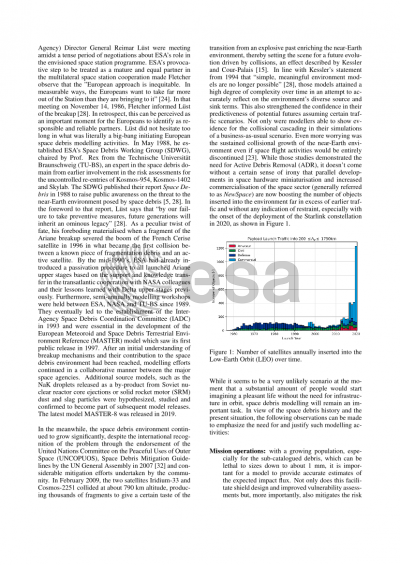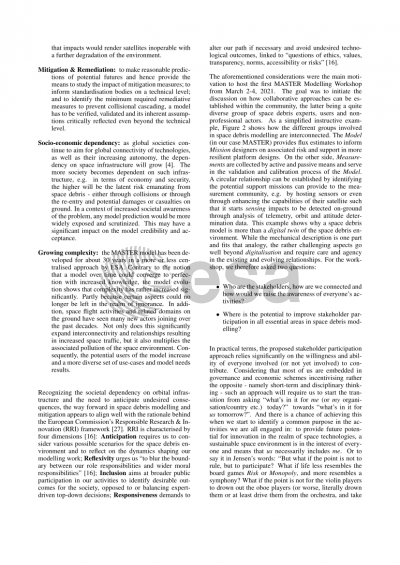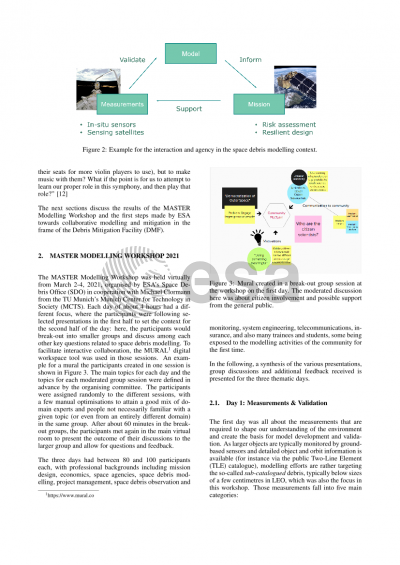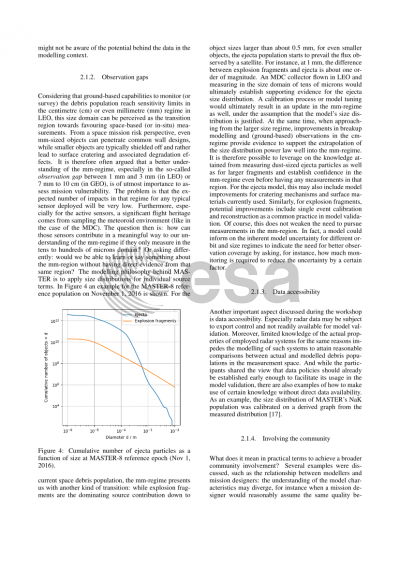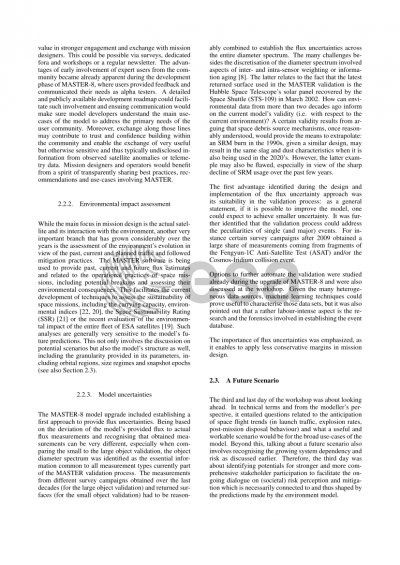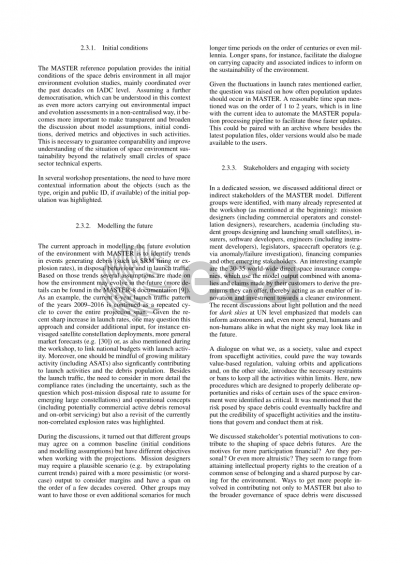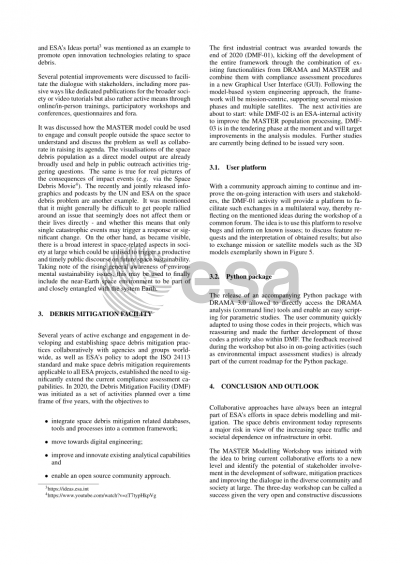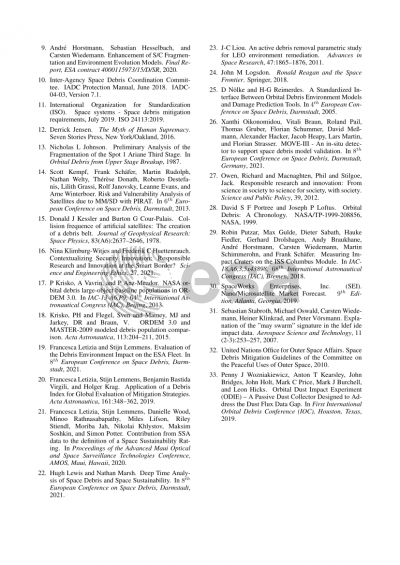Document details

Abstract
Our common understanding of the space debris environment is reflected by models which identify the environment’s source and sink mechanisms and allow us to study its interaction with satellite missions as well as the potential evolution. The European model MASTER (Meteoroid And Space debris Terrestrial Environment Reference) is being developed at ESA (European Space Agency) since the early 1990s and needs to be continuously maintained due to the dynamic nature of the space debris environment. The target orbit flux estimates provided by MASTER are used in mission design and risk analyses in general by a diverse spectrum of users world-wide. The modelled space debris population and its evolution over time enables one to study the impact space debris mitigation has on the environment and dedicated tools have been developed for such assessments, bundled in ESA’s DRAMA (Debris Risk Assessment and Mitigation Analysis) software.
The MASTER model has been extensively validated by ground-based radar and telescope measurement campaigns for the large size population, and by means of studying impact features on returned surfaces for the small size population. Historically, the model’s development was mainly driven by the public sector – and rather constrained to an academic view point - through cooperation between ESA and different research institutes and agencies. Recent developments in the commercialisation of the space sector, involving the design and operation of further ground- and space-based sensors, but also the additional contributions by academia in the public sector, give solid reason to assume an even more diversified approach in the near future with stronger partnership opportunities – the way information is collected and how we transfer the obtained knowledge into the models. That approach will certainly entail more participation and at the same time add significant complexity.
In this paper, the ideas and first implementations of ESA’s Space Debris Office to accommodate for more participative approaches in the domain of space debris mitigation are presented. How can we, in our role as an Agency, connect various stakeholders, facilitate exchange and let everyone contribute such that we all benefit from the resulting models? Starting from outreach and education, over experiment design, to collection of observations and measurements - how can all those pieces be aligned to shape a comprehensive picture?
Among the first steps in facilitating user collaboration with DRAMA was the development of DRAMA’s Python package adding more visibility into how the tools are working. Very positive feedback has been already received including improvements and additions by users. This is a very encouraging aspect, which is further driving the evolution of DRAMA and its transition into the Debris Mitigation Facility (DMF) with a broadly extended open source and community approach.
Finally, space missions being designed today rely on flux assessments for a future space debris environment. Naturally, the associated prediction models are quite complex and inherently uncertain. We therefore aim at increasing collaborative approaches not only for enlarging the user community, and adding new functionalities in support of the user needs, but also for strengthening verification, validation and, in the end, the broad acceptance of the model predictions.
Preview

